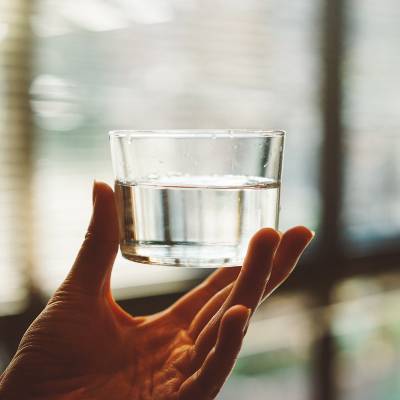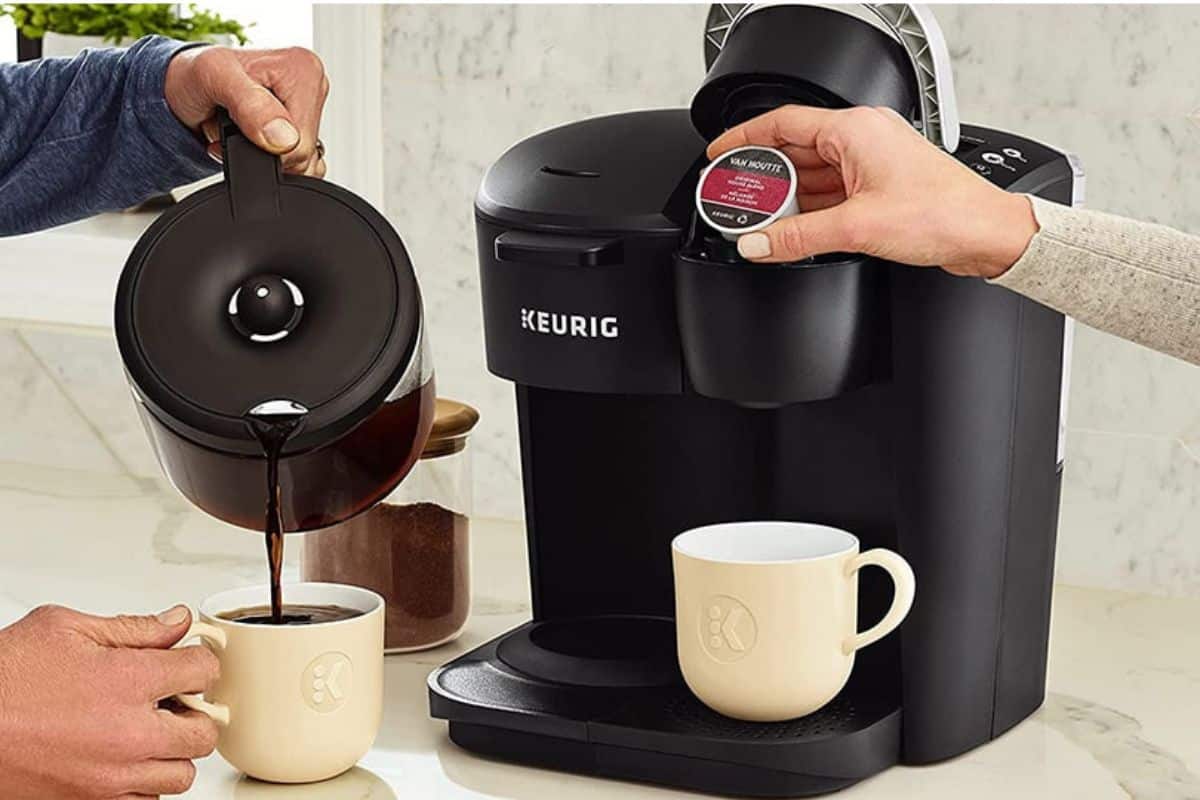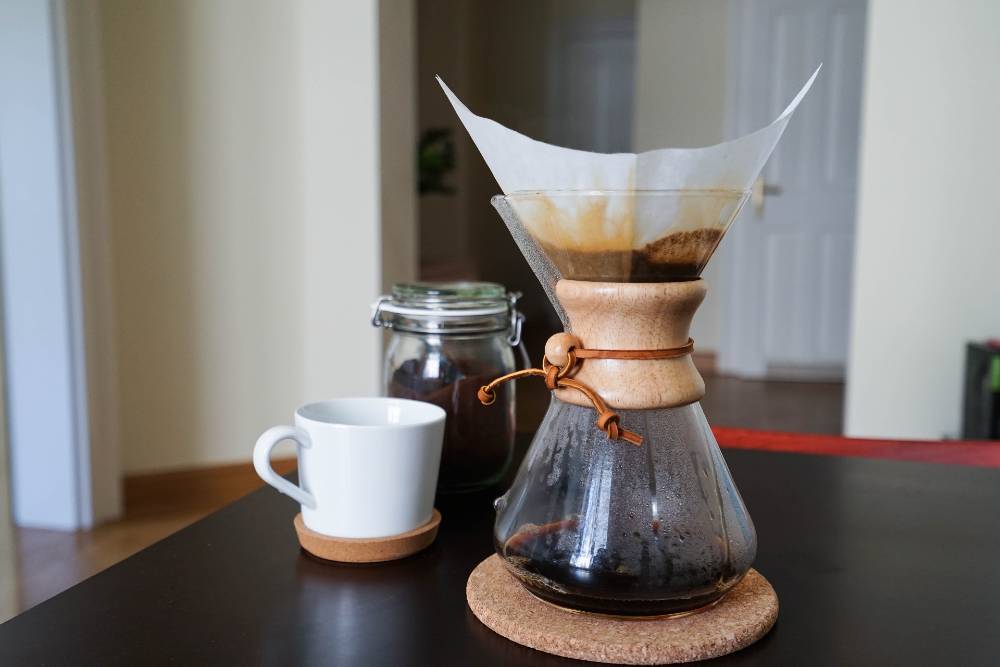If you live in an area that has hard water then you’ll be familiar with the problems caused by limescale. That chalky, white powder makes your bathroom appear dull and dirty and can be a real pain to clean off.
The problem isn’t just localized to your faucet, limescale can also make its way into any kitchen appliance that requires water. From your kettle to your iron, there’s no avoiding the pesky problem and it can do a lot more harm than just look unsightly.
If limescale builds up in your coffee maker it can clog and eventually break the machine. This makes it essential for you to understand how to descale your coffee-making device, no matter what type it is.
It’s a pretty simple process and can be done using a store-bought descaler or equal parts water and vinegar. To understand a bit more about limescale and your coffee maker, read on and we’ll discuss how to treat your specific machine.

What Causes Limescale?
Limescale is a powdery substance that builds up on taps and in appliances where water sits for long periods of time. It is caused by mineral deposits that are naturally found in tap water. These minerals are calcium carbonate. If you live in an area with lots of limestone or chalky soils then the water will absorb this element and it becomes ‘hard water’.
As water evaporates it leaves these minerals behind so you get a chalky deposit. It can also react with soapy water and this leaves ‘soap scum’ deposits on your sink or bath.
How Does It Affect Your Coffee Machine?
The limescale itself isn’t inherently bad for your health but it can make your coffee taste a bit off. The real concern with it is when it starts to buildup on your coffee maker. This mineral buildup can clog the delicate pipework and can cause pump failure which breaks the coffee machine.
Products For Descaling
Store-bought cleaning products are the typical choice for descaling. They contain a descaling agent that reacts with the limescale causing it to dissolve so you can rinse it away. Typically these cleaning solutions contain citric acid as the active ingredient.
If you prefer, you can also use white vinegar diluted with fresh water as a descaling solution.
How To Avoid Limescale

The best way to avoid limescale is to use filtered water in your coffee machine. This can be store-bought or you can use a filter jug to top up your coffee machine.
Another good option is to use a water filter fitted to the underside of your faucet. This will ensure great-tasting, clean water, and no limescale to worry about. This is the best option if you’re using a plumbed coffee maker as they can be a pain to descale.
How To Descale a…
Drip Coffee Maker
Simply rinsing out the carafe after each use will not tackle the problem of limescale. You need to regularly de-scale your drip machine to keep it in good working order.
You can use white vinegar or a store-bought descaler as they are both used in a similar manner.
To start with, remove the coffee and filter and rinse out the jug. Add equal parts water and vinegar to the water tank until the tank is full.
Start the brewing cycle and be ready to switch it off when the coffee pot is half full. Let the machine rest for an hour as this allows the vinegar to fully penetrate into the limescale.
After the rest period, switch the machine back on to complete the brew cycle.
Discard the vinegar/water mix and rinse out the carafe. Add water to the coffee machine and run this through to remove traces of vinegar. It’s best to repeat this step 2-3 times to thoroughly remove any vinegar residue.
If you’re using a descaler solution then just follow these steps but dilute the solution as the packet instructs.
Pod Machine
If you own a Nespresso, Keurig coffee maker, or similar pod machine then it’s just as important to descale. Some brands of pod machines come with tailored de-scaling solutions so when these are recommended it’s best to choose this over vinegar.
Simply add the solution (or vinegar) to the water tank and add equal parts of water. Choose the largest brew size option and place a large mug ready to catch the hot water. Press brew and once the machine has finished, discard the contents down the sink.
Repeat this process until the add water button lights up. Now let the machine sit for an hour to allows the full de-scaling process to occur.
Thoroughly rinse the water tank and run 4-5 cups of clean water through the machine to remove all traces of the descaler.
Espresso Machine

Similar to the other types of coffee maker, an espresso machine needs to be descaled to keep it in good working order. These types of coffee makers can vary a lot from manual to super-automatic but the overall descaling process remains pretty standard.
You may need to heat the machine up first to allow it to reach brewing pressure. Next, switch off the machine and add your descaling solution to the water tank plus equal parts water.
Switch the machine back on and run the descaler through the group head and steam wand if present until the tank is half empty.
Let the machine sit for an hour or so and then run the rest of the solution through.
It can take a long time and a lot of freshwater to fully flush away the descaler depending on how complex your espresso machine is.
How Often Should I Descale My Coffee Maker?
The answer to this really depends on whether or not you filter the water before use and also how often you use your machine. If you use it infrequently and use filtered water then descaling once every 6 months should be ok. If you use your machine daily then you may need to descale it every month. Check the manufacturer’s guidelines when you purchase your coffee machine to help understand the best frequency for you.
Vinegar Vs Descaling Solution
Vinegar is cheap and effective at de-scaling your coffee machine. It is readily available and works really well. The only thing to be wary of when using vinegar is your coffee machine’s warranty. If the manufacturer specifies the use of a particular brand of descaler then using vinegar may invalidate the warranty.
Some coffee machine descaling solutions are specially designed to keep delicate machines in good working order so make sure you thoroughly check the user manual and care instructions before you set about de-scaling your machine.
Water Reservoir Vs Plumbed Machine
A coffee maker with a water reservoir is a lot easier to descale as you don’t need to turn the water off to do this. Plumbed coffee machines sometimes require being disconnected from their water source which can be a bit of a hassle.
When descaling a plumbed machine, make sure you carefully check all the manufacturer’s instructions to ensure you don’t invalidate the warranty.
The best option for a plumbed machine is to fit a water filter to the water inlet to help avoid the limescale problem in the first place.
Final Thoughts
Wouldn’t it be nice if we all lived in an area with soft water and we would never have to worry about descaling ever again? Well, unfortunately, that’s not the reality, and ignoring limescale can lead to a lot of issues down the line. The best option with hard water is to filter it first before you add it to your coffee maker and make sure you de-scale your coffee machine at least once a month if you use it daily.
As ever, always check the manufacturer’s instructions on descaling and make sure the product you are using fits in with their recommendations. Best of luck with your coffee maker and I wish you a long and happy life together, un-interrupted by limescale.





